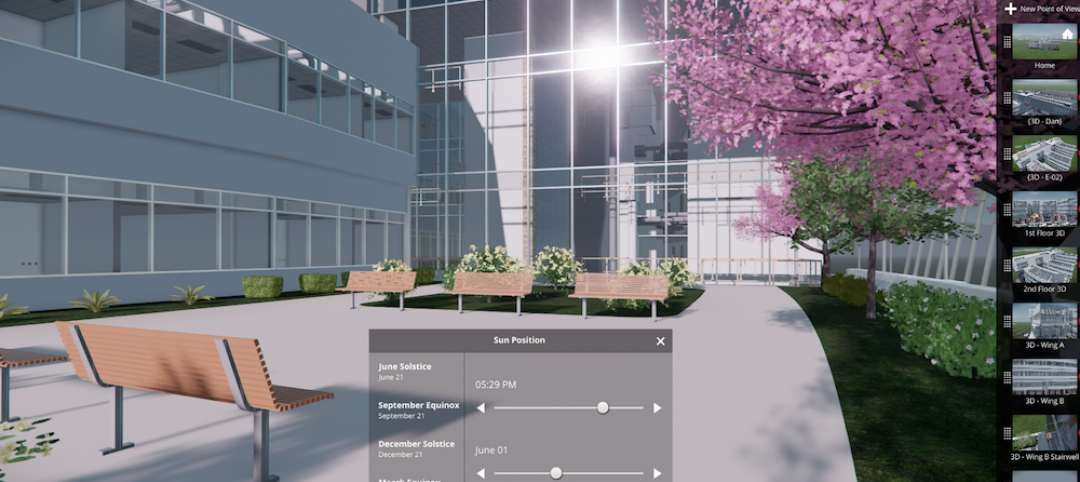Many architecture firms struggled after the economic downturn hit the design and construction industry hard in 2008. However, Foreman Seeley Fountain Architecture, a small Atlanta firm with 14 employees, managed to survive the Great Recession and is now positioning itself to thrive in the economy’s recovery.
What helped FSF become resilient and get through these tough times was a solution that helped them plug some leaks in their cash flow. By minimizing these leaks, they were able to increase revenue very quickly.
Hemorrhaging Money
FSF’s Vice President Jeff Seeley describes his firm as being pretty typical. “We were just like a lot of firms—just spreadsheeting it. We’d file an expense report, then months later, realize we’d forgotten to bill the client for our mileage. It was too late and too embarrassing to go back and ask for it later.” Multiply this by several similar instances and it’s easy to see how FSF’s existing billing system was costing them money.
Looking back, Seeley realizes there were all kinds of miscellaneous hours for which FSF wasn’t billing, such as additional services, mileage to job sites, and blueprinting. All this billable time was adding up, just not in their bank account.
Plugging the Leaks
According to Seeley, “All those little things we weren’t billing for? Those added up to thousands of dollars a month. That’s what we started saving when we started using ArchiOffice.” FSF started using ArchiOffice in 2007.
That made all the difference in helping them keep their doors open during hard times. “We have watched other architectural firms require severe staff reductions to survive. We’re still afloat, and I truly believe that’s because we did a better job of identifying those lost reimbursables and learning to time manage our projects better.”
Improving Project Management
Because Seeley and his coworkers could see the percentage complete of various project stages with ArchiOffice, they realized how many hours were being spent on certain project phases and started to budget their time better.
“Here’s an example: we were doing a school renovation. We had six weeks. The way we used to do it, I’d just look at it as ‘I’ve got six weeks to do it’ and suddenly, half my fees were eaten up by schematic design,” Seeley laughs. “Now, I pay attention to how many hours have been allotted to complete a task, not what day it is due. Once those hours are up, I start asking where the drawings are, and people don’t spend all their time on one phase.”
FSF’s staff also started doing a better job paying consultants now that ArchiOffice was helping them to plan before the job began, making financial planning clear and easy. They knew where they stood with the budget. “We have a clearer vision of where we’re going to be financially two or three months out, so we do a much better job of allocating our resources. If we know there’s going to be a rise or dip, we can plan accordingly, based on how much work we have ahead of us,” says Seeley.
Adapting for the Future
Recently, the firm implemented ArchiOffice’s document management and remote access capabilities. So now, their staff can access project data and documents from anywhere they have internet access–virtually expanding their office’s reach. “We were on a job site recently and someone asked for the specs. No one knew where they were. The contractor didn’t have them—they were probably stuck holding a door open somewhere. So someone pulled out a laptop, accessed ArchiOffice remotely and opened up the specs document for us right away. The amount of time ArchiOffice saves us is invaluable.”
Related Stories
BIM and Information Technology | Sep 7, 2016
Energy Star Portfolio Manager tool updated to factor in waste management
The costs and benefits of managing 29 types of waste are now included.
BIM and Information Technology | Aug 30, 2016
BIM GIANTS: A ranking of the nation's top BIM design and construction firms
HOK, Perkins+Will, Turner Construction Co., The Whiting-Turner Contracting Co., Jacobs, and Thornton Tomasetti top Building Design+Construction’s annual ranking of the nation’s largest BIM AEC firms, as reported in the 2016 Giants 300 Report.
BIM and Information Technology | Aug 30, 2016
New service from CBRE provides deeper insights into in-building wireless network experiences
With dependable cellular and Wi-Fi coverage a must-have amenity for today’s businesses, CBRE to certify in-building network quality through new Cellular Signal Mapping service
BIM and Information Technology | Aug 22, 2016
The wicked problem of interoperability
Building professionals are often put in a situation where solving problems with the ‘best tool for the job’ comes at the cost of not being able to fully leverage data downstream without limitation, writes Proving Ground's Nathan Miller.
Contractors | Aug 10, 2016
Dodge launches new app to simplify pros' search for suitable projects to bid and work on
The product, called PlanRoom, could be particularly useful in sharing data and communications among AEC teams.
BIM and Information Technology | Aug 9, 2016
How to improve a project presentation with animated GIFs
Animated GIFs are a simple tool that can explain a large amount of intricate information in an easy to understand, streamlined manner.
BIM and Information Technology | Jul 25, 2016
Autodesk’s LIVE turns designs into video game-like experiences
Users can adjust navigation points, render styles, and even the time of day, with fluid and quick controls.
Building Tech | Jul 14, 2016
Delegates attending political conventions shouldn’t need to ask ‘Can you hear me now?’
Each venue is equipped with DAS technology that extends the building’s wireless coverage.
BIM and Information Technology | Jun 14, 2016
Autodesk and Trimble will share APIs to develop products that improve user workflow
Data and document management is likely to benefit the soonest.
BIM and Information Technology | Jun 13, 2016
The race to digitize the globe with 3D imagery
Tech firms are creating a highly-detailed virtual planet available instantly for those who would like to scrutinize it. SmithGroupJJR's Stephen Conschafter details the new technologies being used to map our world.


















